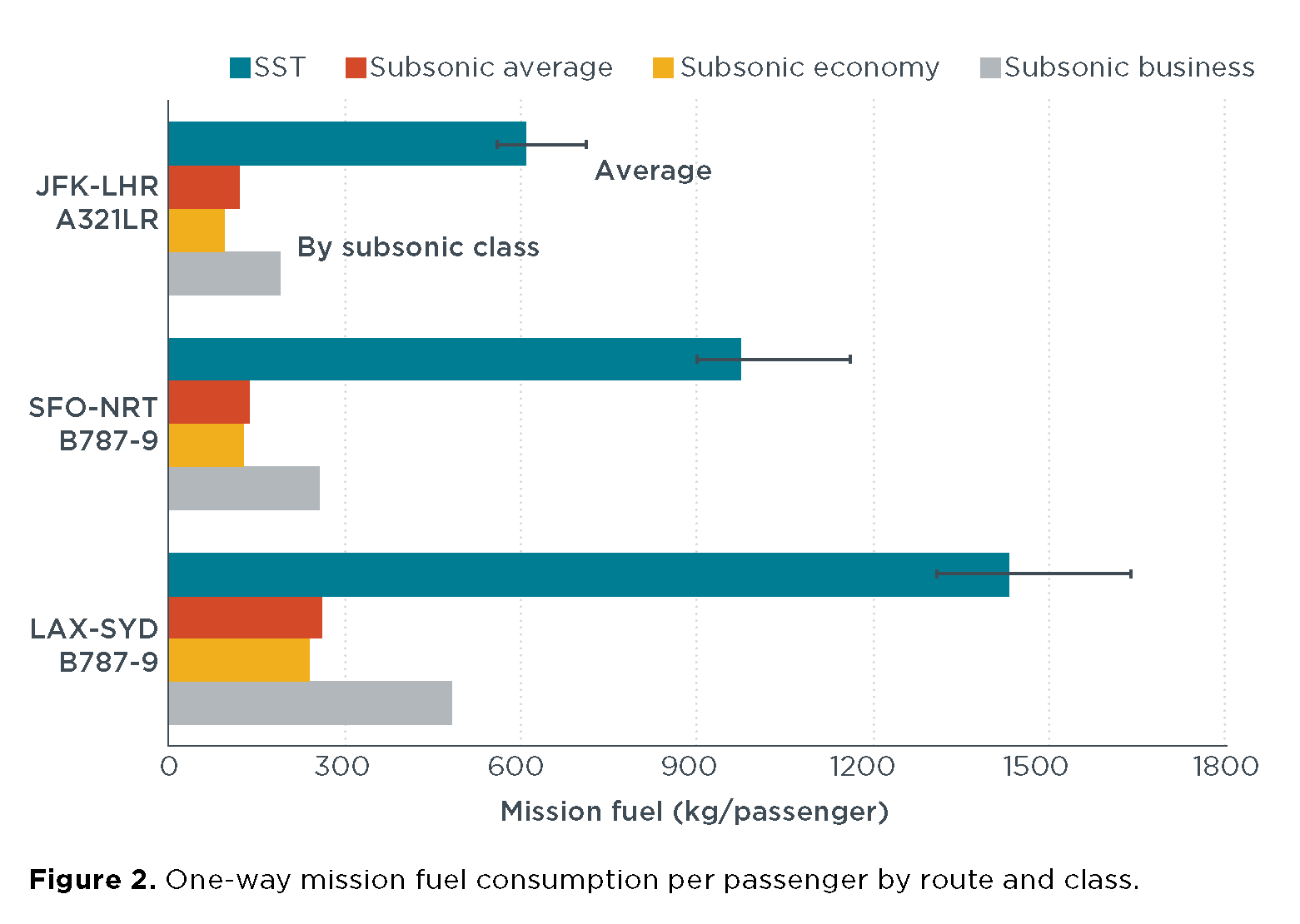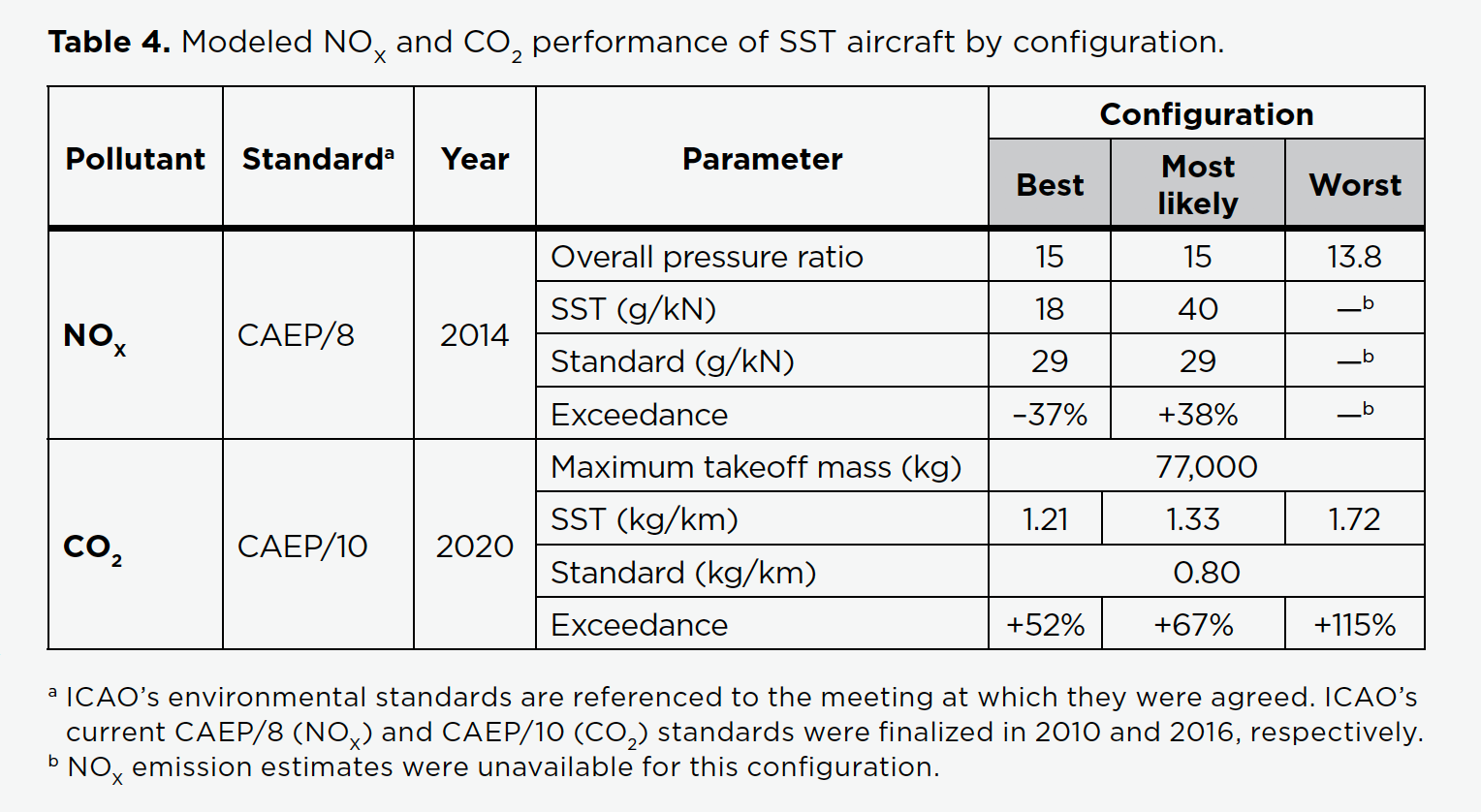Environmental performance of emerging supersonic transport aircraft
Press release
Reviving supersonic flight would likely have significant harmful environmental consequences, new analysis shows
New supersonic aircraft could burn 5 to 7 times more fuel than standard aircraft and exceed CO2 emission limits by 70%
The re-introduction of supersonic transport aircraft (SST) into commercial aviation, as a number of companies have recently proposed, would mean dramatic increases in carbon emissions from aircraft, a new paper from the International Council on Clean Transportation suggests. Without advanced, “clean-sheet” engines, new supersonic aircraft would likely exceed existing international standards for air pollution, landing and takeoff (LTO) noise, and carbon dioxide (CO2) emissions from subsonic aircraft.
Three “start-up” companies – Aerion and Spike for business jets and Boom for a commercial airliner – are attempting to revive supersonic flights in the next decade. Their efforts are being supported by established industry groups like Lockheed Martin, Richard Branson’s Virgin Group, and Japan Airlines.
Effectively, there are no environmental standards governing SSTs today. FAA and international regulators are working to establish those standards, either by applying existing standards for subsonic aircraft to the new designs, or by setting SST-specific standards.
The study models the environmental performance of a commercial SST using publicly available data from one manufacturer. The analysis suggests that a new SST based upon an existing (“derivative”) engine could exceed International Civil Aviation Organization (ICAO) limits for new subsonic aircraft by 40% and 70%, respectively, for nitrogen oxides and carbon dioxide. In addition, the model burned 5 to 7 times as much fuel per passenger as comparable subsonic aircraft. In the best-case scenario, the model burned 3 times as much fuel per business-class passenger relative to subsonic aircraft; in the worst case, it burned 9 times as much fuel relative to an economy-class passenger on a subsonic flight.

The model supersonic aircraft also exceeded allowable LTO NOx limits for subsonic aircraft by 38% in the most likely configuration, and CO2MV limits by 52% to 115%, with a most likely exceedance of 67%. The best-case, advanced clean-sheet engine was estimated to comply with the latest subsonic NOx standards. A qualitative noise analysis suggests that near-term designs are unlikely to meet the ICAO’s 2018 LTO subsonic noise standard.

The analysis suggests that near-term commercial SSTs are unlikely to comply with existing efficiency and pollution standards for the subsonic commercial air fleet. Those aircraft are more likely to meet the subsonic standards if they instead use new technologies, including variable-cycle engines and staged combustion, on a clean-sheet engine. Alternatively, policymakers could choose to set SST-only standards to enable further development. Those standards would allow for increased air pollution, noise, and CO2 emissions compared to new subsonic aircraft.
Anastasia Kharina, study co-author and researcher at the ICCT, says “People are understandably excited about the prospect of boarding a supersonic jet in the near future. This analysis is a useful reminder that environmental standards will be needed to ensure that supersonics are reintroduced in a responsible way.”
Daniel Rutherford, study co-author and aviation program director at ICCT, stated, “There are reasons to be worried about the environmental impact of reintroducing supersonic aircraft. A modest first step is for manufacturers to commit to meeting existing standards for new aircraft.”
Contact
Daniel Rutherford, program director, dan@theicct.org, 415-202-5747; 650-336-3536
Publication details
Environmental performance of emerging supersonic transport aircraft
Authors: Anastasia Kharina, Tim MacDonald, Dan Rutherford
Download: http://www.theicct.org/environmental-performance-emerging-commercial-supersonic-aircraft
Further information: International Civil Aviation Organization CO2 standard for new aircraft
https://www.theicct.org/publications/international-civil-aviation-organization-co2-standard-new-aircraft
###
The International Council on Clean Transportation is an independent nonprofit research organization, staffed by experts in light-duty and heavy-duty vehicles, transportation fuels, shipping, aviation, climate science, and health. It is funded primarily by foundations, with additional support from government contracts and international bodies. Major support comes from the ClimateWorks Foundation, the William and Flora Hewlett Foundation, the David & Lucile Packard Foundation, the European Climate Foundation, the Blue Marble Fund, and the Climate and Clean Air Coalition to Reduce Short-Lived Climate Pollutants.
One Post Street Suite 2700 | San Francisco CA 94104
1225 I Street NW Suite 900 | Washington DC 20005
www.theicct.org | communications@theicct.org | @TheICCT
